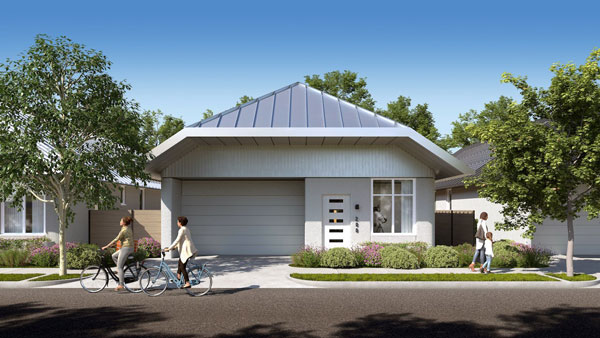Advances in robotic technology for construction lead many to believe that entire buildings could be built by automated machines. In fact, robotic machinery is already in use on worksites, for example in the creation of entire block wall structures.
Is the next logical step the complete construction of buildings using 3D printing (3DCP)?
Many housing experts believe so. They point to rapid construction, enhanced structural integrity and design flexibility as 3DCP’s strongest attributes in an era of labour shortages and calls for improved energy-efficiency.
The concept of 3D construction printing traces back to 1940 when U.S. inventor William Urschel patented his “Wall Building Machine.”
However, 3D printed buildings weren’t feasible until the early 2000s with the integration of a robotic arm and nozzle that oozed concrete into architectural shapes.
Development has raced ahead since.
Today, homeowners are moving into a 100-home subdivision at Wolf Ranch, a new master-planned community developed by Hillwood Communities LLC, 30 miles north of Austin, Texas, that has been built by 10, onsite “Vulcan” robotic printers.
This is 3DCP on an entirely new scale, and only made possible through the participation of Miami-based Lennar Home Corp, one the largest homebuilders in the United States. Lennar has partnered with Austin-based ICON Technology Inc., a leader in 3DCP with contracts to develop technology for building structures on the moon.

“With 3D printing, you not only have a continuous thermal envelope, high thermal mass and near zero-waste, but you also have speed, a much broader design palette, next-level resiliency and the possibility of a quantum leap in affordability,” said ICON co-founder Jason Ballard in a media release. “This isn’t 10 per cent better, it’s 10 times better.”
The homes of Wolf Ranch combine contemporary Texan styling with energy-efficient designs in eight floorplans with 24 different elevations, ranging from 1,500 to 2,100 square feet. Prices start at $475,000.
Not all opinions on 3DCP are supportive. For one thing, the use of concrete as the prime building material is questioned for its association with carbon emissions.
However, alternate cementious materials are being introduced, notably PozzoCEM Vite.
Developed by Eco Materials Technologies, PozzoCEM Vite is a near-zero carbon, longer-lasting and more durable concrete. The material was recently used as part of The Casitas @ The Halles, a collection of small 3DCP rental homes ranging from 400 to 900 square feet near Roundtop, Texas.
Whether 3DCP technology could be an effective tool to address Canada’s housing shortage is far from clear. However, a team of building specialists, led by a Cégep teacher in Rouyn-Noranda, Québec, is determined to find out.
David Laliberté teaches industrial maintenance, but his background as a factory manager gives him a perspective on manufacturing efficiency and quality control. He told local media about his aversion to traditional methods of homebuilding that require multiple thermal seals alongside openings for plumbing and ventilation and electrical service.
“In terms of industrial engineering, all these gestures are equivalent to so much risk of error.”
Laliberté has gathered together other academics with specialities in design, materials and construction. With the assistance of a $1 million grant from the Québec government, Laliberté’s team’s immediate objective is to complete a model 3DCP home by the spring of 2026 that will be donated to Habitat for Humanity in Québec.
Creating 3DCP concrete homes in Canada faces challenges unseen in Texas. Foremost are climatic differences. It simply isn’t possible to “print” a concrete building onsite in extreme cold, for example. The answer, Laliberté believes, is to fabricate 3DCP elements in a factory setting and then transport them to the site for assembly.
3DCP prefabrication would also eliminate the need to move and set up complex printing machinery at each construction site. Only volume production as seen in Texas makes in-situ robotics practical.
Of course, 3DCP homes would also face building code and regulatory issues that must be tackled jurisdiction by jurisdiction. That is one of the common challenges to be overcome as part of Canada’s overall home shortage discussion.
John Bleasby is a Coldwater, Ont.-based freelance writer. Send comments and Inside Innovation column ideas to editor@dailycommercialnews.com.



Recent Comments